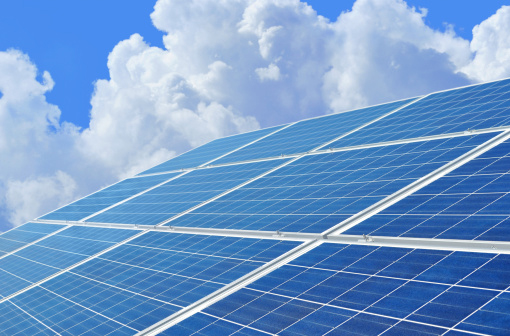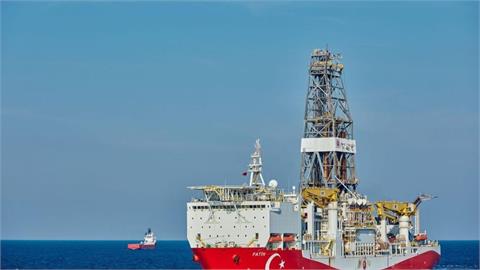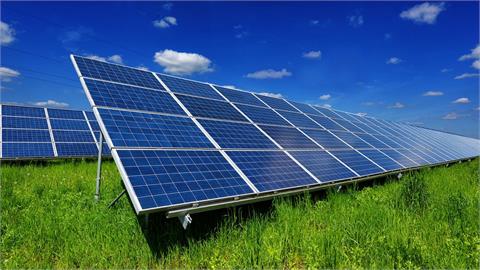by Martin Schachinger* Four years after the Renewable Energy Law (Erneuerbare Energien Gesetz or EEG) came into force in 2004, Germany experienced a boom in demand for the first time, which threatened to overtake supply. This created a sellers’ market characterized by high prices and a lack of transparency
(Martin Schachinger of pvXchange looks back at
the last 10 years that have passed since pvXchange was established,
offering a review of the very unsettled development of the German and
European photovoltaic market since 2004)
Four years after the Renewable Energy Law (Erneuerbare Energien Gesetz or EEG) came into force in 2004, Germany experienced a boom in demand for the first time, which threatened to overtake supply. This created a sellers’ market characterized by high prices and a lack of transparency. At the time, no significant market existed in any other European country. It was only in 2007 that Spain first experienced an increase in demand for PV, followed by Italy in 2008 despite a feed-in tariff law there that had already been in force for several years but was opaque and would only be simplified later.
The specific design of the digression mechanism in the German EEG – reducing the tariff on January 1 each year – caused the PV sector to experience a run at the end of each year from 2005 to 2011. This resulted in a chronic shortage of supply, rising prices and a general last-minute rush. Everyone wanted to have the planned systems connected to the grid on time, worked overtime and paid almost any price for the coveted modules. New installations were even often completed feverishly between Christmas and New Year. Energy provider and network operator employees also frequently collapsed under the sheer load of orders.
In the face of the funding ceiling being reached and the resulting end of the gold-rush period, demand in Spain once again experienced strong growth in April 2008. European suppliers had been unable to satisfy the market on their own for a long time, and ever more new manufacturers, principally with production facilities in China, swamped the market. However, the quality of the products on offer was somewhat questionable and not up to the conventional standards in this country. Yet, due to necessity, anything and everything resembling a module was purchased and installed. This would later come back to haunt the market, with whole megawatt parks experiencing numerous problems and failures.
Then October 2008 saw the sudden but anticipated end to the Spanish
boom. At first there was no follow-up solution, simply helplessness on
the part of all concerned, including the Spanish government. Later, a
half-baked tender process was introduced, which killed off all demand on
the Iberian Peninsula.
The break-away Spanish market could not be
completely compensated for by the demand in other European countries,
which caused the European expansion figures for 2009 to stagnate. The
German market also seem to take a long time to get going, although the
module prices of manufacturers were continuously being corrected
downwards. Overall, the year was characterized by the largest drop in
prices ever experienced by the PV sector -- a total of almost 40% by the
end of the year. However, this level was exceeded once more just two
years later when the module prices for Chinese goods dropped by a total
of around 47%.
From the end of 2009, project engineers and installers were already being faced with their first ever inverter bottleneck, which was only gradually resolved by the manufacturers topping up their capacities. Germany saw the introduction of the so-called "cold installation,” i.e. certification of the readiness for operation of the modules by the network operators -- with no inverters supplied or installed -- in order to be granted the desired level of compensation by the deadline.
In France meanwhile, small and roof-integrated systems increased in popularity thanks to an increase in the feed-in tariff, allowing this segment to achieve comparably high installation figures. BIPV systems also received disproportionate compensation in Italy, with the final approval only being received following grid connection, which endangered planning reliability. Many manufacturers reacted to the increased demand and offered newly developed integration concepts.
When the extension corridor for PV envisaged by German politicians was once again under threat of being significantly exceeded in 2010, out came the red pen. Not long after, despite considerable protest from the sector, several cuts were made, the last of which occurred in August with retrospective effect dating from July 1 that year. However, the new capacity installed in 2010 represented growth of 80% on the previous year to more than 7 GWp.
However, after this general boom year, resistance was encountered everywhere. Overall, the political resistance supported by the conventional energy industry put an obvious brake on the expansion of photovoltaics in Europe from the end of 2011. Throughout Europe, installation figures had already started falling, driven by the heavy reduction in Italy. Meanwhile, they continued to stagnate in Germany until the start of 2013, before a dramatic market slump of approximately 55 percentage points occurred. That any adequate compensation model for solar energy still existed in Europe at this time was certainly also thanks to the nuclear catastrophe in Fukushima, Japan -- as unfortunate as these circumstances may have been.
By 2011, these negative developments had caused companies to fail all along the value-added chain, and this is still the case. Globally active manufacturers and medium-sized installation operations often could not withstand the pressure and had to throw in the towel, frequently filing for insolvency.
Overall, in terms of the local markets, 2012 turned out to be a somewhat mixed year. In Germany, it was characterized by extensive amendments to the EEG, in which an expansion target and extension corridors together with a so-called "flexible cap” were stipulated for the first time -- an additional adjustment of the tariff depending on previous extension figures. A monthly degression also occurred for the first time in order to prevent the dreaded year-end rallies. As a result of the persistently strong price reductions for crystalline modules over the years and the increasingly unattractive tariffs for large-scale systems, thin-film technologies were losing ever more ground. The products, which until only a short time previously had been expounded as future-proof, were no longer desirable. Many manufacturers, which had only just been established and fed by much media hype and considerable financial investment, thus vanished into thin air again.
Prices of Chinese modules began to increase again slightly throughout 2013. This was due to the anti-dumping and anti-subsidy investigation of the EU Commission initiated by industry representatives, which initially led to the threat of protective tariffs and eventually to the introduction of a minimum price regulation and the provision of import caps for Chinese products. Early on in the year, before the announced measures came into force, even larger quantities of Asian modules were imported to Europe to be sold off over the coming months. However, some of these goods can still be found in warehouses near ports today.
Although the last minimum price regulation to be agreed upon with China has still not lead to a complete harmonisation of prices for modules across all regions of origin, it has at least led to a significant convergence. While there was still a gaping price difference of more than 40% between Chinese and European products at the beginning of 2013, this has now been significantly reduced to 10% at the end of 2014. Of course, products enter the market from other areas of Asia which are not subject to any regulations in place of the cheap Chinese goods. From today's perspective, the intervention of the EU Commission does not guarantee the survival of any European manufacturer already unable to undertake an extensive cost reduction programme and a target group-specific alignment themselves.
In 2014, the PV world -- in Europe at least -- has been turned upside
down. A country with comparatively low solar intensity such as Great
Britain leapt to the top of the installation statistics for the first
time. With considerably more than 2 GW, the island nation overtook the
hitherto market leader, Germany, where the 2 GW limit was (only just)
reached with much effort, with Italy taking third place with miserable
figure of much less than 1 GW. Overall, the annual additional capacity
now fell for the third time in a row to 7.5 GW, only around a third of
the 2011 peak value of 22.3 GW and just 16% of the worldwide additional
capacity.
Photovoltaics as an investment model appears to have run
its course, at least outside the UK. The sector urgently needs new
concepts.
There needs to be a solution, structured largely independent of legally prescribed tariffs and which ensures the profitability of the systems by direct marketing and/or additional utilisation aspects such as emergency power supplies or independence from network operators. What was hitherto an extremely easy-to-market business concept (investment model with a return of X%) and simple systems technology, has suddenly become a highly complex system which needs to reconcile energy supply, grid requirements and consumer behaviour.
There are numerous installers, wholesalers and manufacturers with outdated structures who will presumably not withstand this transformation, this paradigm shift. However, many small, flexible and highly innovative companies will remain who, with revised concepts, will bravely tap into new markets and exploit the enormous potential which photovoltaics 2.0 undoubtedly offers. We look on, expectantly to see which companies and products will become the stars of 2015.
*Martin Schachinger is CEO and founder of pvXchange GmbH.
Read more: http://www.pv-magazine.com/opinion-analysis/blogdetails/beitrag/10-year-market-review_100017838/#ixzz3T9gIuFH4




